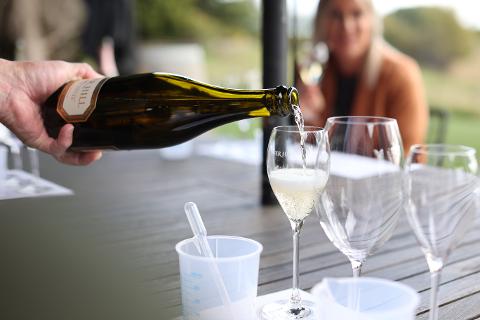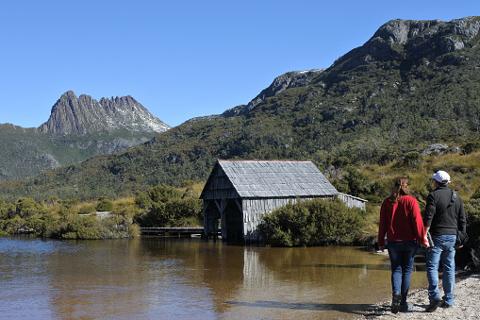








Port Sorell
An easily accessible summertime sanctuary on the northwest coast.
WHAT SPARKS YOUR INTEREST?
Region
Follow the Port Sorell waterway north until you reach the Bass Strait and you'll find this small Tasmanian town of the same name. You'll find an abundance of wildlife in Port Sorell as it is near the Rubicon Estuary. The estuary has been named an Important Bird Area by BirdLife International due to its geographic importance for the Pied Oystercatchers.
This small ocean town is near the incredibly beautiful Shearwater and Hawley Beaches, and it is across the waterway from the Narawntapu National Park and its array of local wildlife.
Point Sorell may have had a larger role in Tasmania's history if it weren't for tragic bushfires. The northwest coast's major port moved west to Devonport due to these tragic events.
Location
Port Sorell is just 21 kilometers east of Devonport and an easy 20-minutes drive. It'll take you a little over an hour's drive from Launceston while Hobart is clear across the island and a 3-hour drive.
Port Sorell sits on the waterway of the same name in the north of Tasmania. This small town of just more than 2,000 residents has become a summertime destination. It is a tranquil vacation spot with incredibly soft, white, sandy beaches and thundering natural beauty.
 The small town has a permanent floating pontoon for saltwater fishing. The town also draws nature lovers with plenty of foreshore walks, beautiful beaches and large sand dunes. The adventurous can even walk to Penguin Island and Rabbit Island during low tide.
The small town has a permanent floating pontoon for saltwater fishing. The town also draws nature lovers with plenty of foreshore walks, beautiful beaches and large sand dunes. The adventurous can even walk to Penguin Island and Rabbit Island during low tide.
This small town erupts with warm weather water sports during summertime. The enthusiastic, outdoor loving crowd is taken care of with a wide range of accommodation.
This quaint northwest Tasmanian town puts an emphasis on caravan parks and simple accommodations. With its abundance of outdoor activities and wildlife, this quiet town is a popular destination for boating enthusiasts, leisure seekers and fishermen alike. It is a simple place where you can escape the hustle and bustle of everyday life.
 You'll find Port Sorell tucked behind the sand dunes on the banks of the waterway. It's really a collection of a few small shops and holiday homes along the river. But with its proximity to Shearwater and Hawley Beaches, the Rubicon Estuary, the Rubicon River, the Narawntapu National Park and the Bass Strait, it is a centre of outdoor activity on the northern coast.
You'll find Port Sorell tucked behind the sand dunes on the banks of the waterway. It's really a collection of a few small shops and holiday homes along the river. But with its proximity to Shearwater and Hawley Beaches, the Rubicon Estuary, the Rubicon River, the Narawntapu National Park and the Bass Strait, it is a centre of outdoor activity on the northern coast.
Those who love fishing will find Port Sorell's sea fishing pontoon quite attractive. Those looking for an escape on a wide, sandy beach will enjoy nearby Shearwater and Hawley Beaches. Nature lovers will want to jump the Rubicon River to catch a glimpse of the local Forester kangaroos, wallabies, wombats and Tasmanian devils in the coastal Narawntapu National Park.
Point Sorell is also an interesting destination for food lovers. Sitting in a tapestry of fields that is Tasmania's food bowl, Point Sorell offers up a variety of foodie indulgences. You can find quaint restaurants, rustic vineyards, sprawling orchards and delicious chocolatiers throughout the region. Image thanks to: Tourism Tasmania and Heath Holden (Saltwater Fishing) and Tourism Tasmania & Brian Dullaghan (Hawley Beach)
Accommodation Offerings
Port Sorell keeps it quaint with caravan parks and simple accommodations. You'll also be able to find a variety of holiday houses along the waterway. And with an abundance of outdoor activity in the area, you'll be able to find accommodations for a long-term stay.
Activities and Things to Do and See
 The town's jetty is a popular destination. Near the town's main caravan park, it gives you impressive views of Baker's Beach and Narawntapu National Park. It's also a great place to throw in a line to catch some local fish.
The town's jetty is a popular destination. Near the town's main caravan park, it gives you impressive views of Baker's Beach and Narawntapu National Park. It's also a great place to throw in a line to catch some local fish.
The town's Bowling Green sits atop a sand dune known as Watch House Hill. And there are a variety of coastal walks to find through the dunes near Point Sorell Waterway and Narawntapu National Park. Point Sorell itself is a sleepy town perfect for fisherman, outdoor adventures and book readers seeking peace. You'll have to venture out to find more modern amenities. Image Credit: Tourism Tasmania & Brian Dullaghan (Backhorse riding on Narawntapu National park Beach)
What to Eat
You'll find quaint little local eateries on Port Sorell's Peninsula. You'll have to venture to nearby Shearwater for a more high-end restaurant experience.
History
Settlers came to what would become Point Sorell in 1808. The town sprung up because its ability to grow wheat and a mill was built to process the grain in 1817. In 1821, Governor Lachlan Macquarie arrived for a visit and named the land after Lieutenant Governor William Sorell.
The small town still has its barracks from the days of the infamous Black Line. The barracks housed soldiers who were attempting to round up all Aborigines on the island. The Sorell Barracks still stand and you can visit this historical 1827-built landmark.
Environment
Port Sorell has a uniquely warm climate which makes it perfect for a summertime getaway. You can expect occasional rain showers throughout the year and it can be windy at times.
Useful Information/Local Tips
Shearwater, Hawley and Freers Beaches all give you walking access to Penguin and Rabbit Islands at low tide. The islands are said to be hideaways for bushrangers back in the 19th century.

The 40-acre Sykes Sanctuary is a nearby attraction for bird lovers that is abundant with and perfect for a walk.
Church lovers will be impressed with the town's St. George's Anglican Church, Scot's Church and St. Thomas's Catholic Church. Each church was founded back in the 19th century and are all within walking distance to each other. Image Credit: Tourism Tasmania & Garry Moore ( George's Anglican Church)































































































